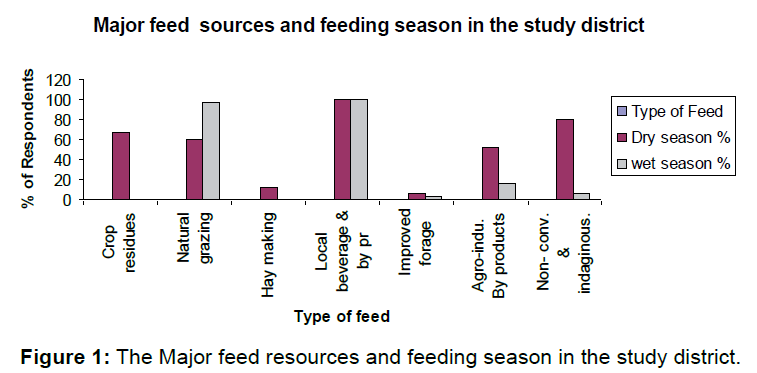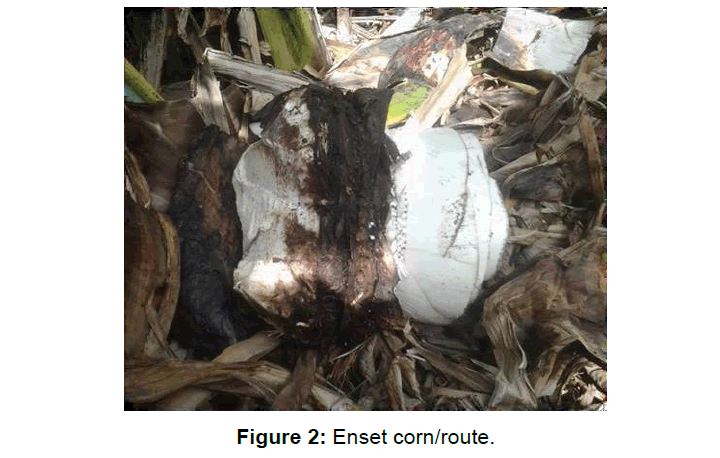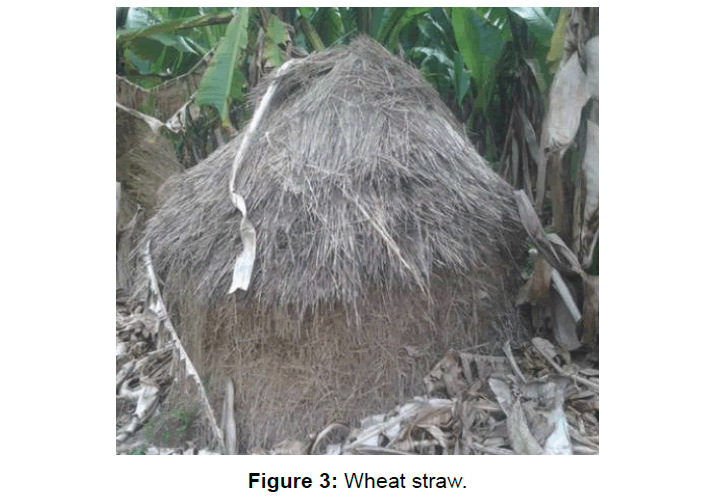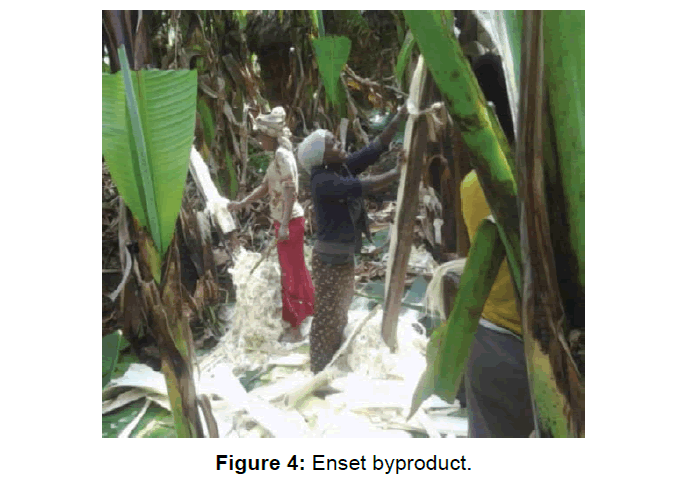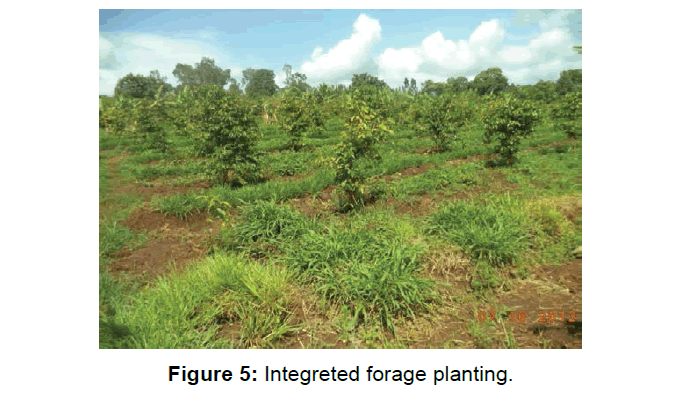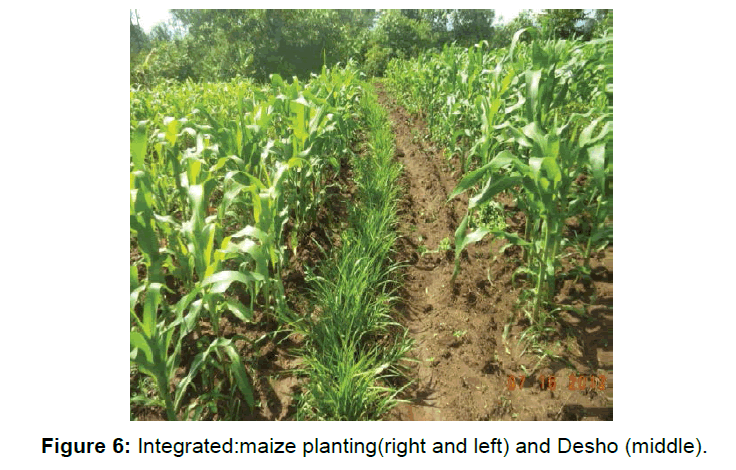Assessment of Livestock Feed Resources in Boloso Sore Woreda, Wolayita Zone, Ethiopia
Received: 21-Aug-2017 / Accepted Date: 31-Jan-2018 / Published Date: 05-Feb-2018 DOI: 10.4172/2332-2608.1000260
Abstract
The study was conducted in Wolita zone Boloso sore woreda. The objective of the study was to assess and identify major livestock feed resources availability and feeding calendar. Livestock feed resources was identified using semi-structured questionnaire, group discussion and key informants. Observations were also made to cross check the information obtained. The average landholding of the area is 0.95 ha per household. Grazing areas (both individual and communal) constituted the largest proportion in wet and sustainable feed supply throughout the year. Crop residue is the main feed source for livestock during dry season. About 14.16% of the total land holding is used for grazing (for cut and carry and free grazing). Feed resources available to the farmers are dominated by poor quality of natural pastures and crop production. Shortage of grazing land and inadequate feed supply are the major constraints of livestock production in the area. Having many more problems associated with livestock feeding with regard to shortage of feed, there is no strategic feed conservation in the form of silage and hays. Therefore, government and non-governmental organizations should play a significant role through training farmers, and creating awareness about livestock feed resource improvement (conservation of feed, improved forage development and etc.) regarding to quantity as well as quality aspects.
Keywords: Boloso sore worda; Livestock feed resource; Longitude; Agro-ecologies
Introduction
Livestock production is an integral part of the farming system in all parts of Ethiopia. The sector plays a vital role in the lively hood of the majority of the people in the country. Inspire of this, the productivity of livestock is low mainly due to several factors such as genetic make-up, poor nutrition and poor veterinary care. But poor nutrition is the major Limiting factor. Livestock feed resource are classified as natural pasture, crop residue improved pasture and forge, agro-industrial by-products like food and vegetable refusal, of which the first two contribute the largest feed type. Even though Boloso Sore worda is endowed with large number of livestock population, the major constraints is that the source of livestock feed resource in the area hasn’t well identified and well documented so far. Moreover, the livestock feed resource was decrease time to time due to various reason (drought, increase of crop production, drought erosion and etc.) and the farmers suffer to feed their livestock. Therefore, it is indispensable to carry out the livestock feed resource study at the specific area that would provide some basic information for further study and characterize the livestock feed resource constraints and related issues of the area.
To this effect, comprehensive survey types, quantity, quality, availability alternative uses and relative costs of the different feed resources is important to identify the feed resource and to facilitate the decision making process in livestock feed resource development under small holder Ethiopia condition. The results provide firm understanding of the prevailing situation and enable specific interventions to be introduced. The generation of appropriate feed technologies, however, demands careful and integrated research activity planning. Understanding of the natural, socio economic and the farming system of the area is the first and crucial step to develop environmentally sound and socially acceptable livestock technologies [1,2]. Diagnostic surveys play a great role to identify constraint that can be addressed by research and in providing base line information about the target farmers. Therefore the objectives of this study were to assess major feed resources and its availability in the area and to identify the major constraints of livestock feeds.
Materials and Methods
Description of the study area
Boloso sore worda is located at 37047, E longitude with 7069, N latitude in Wolayita Zone, SNNPRS. The soil types of this particular site are sandy clay loam having a pH of 4.3. The altitude is about 1800 meters above sea level with an average rain fall of about 1538.44 mm. The mean minimum and maximum temperature of the area is about 14.48°C, and 28.5°C, respectively. The total area of the woreda 33600 hectares of which 26193.751 hectares are cultivable, 1975.57 covered by grazing lands, 1644.41 hectares forest and bush land, 159.75 hectares uncultivable land, 252.26 hectares, currently irrigated land, swamp and degraded 1869.13 hectares and 1505.129 hectares other. The total livestock population of the area is cattle 59011 sheep 15605, goat 8032, equine 318, and poultry 67809 (Boloso Sore woreda Agriculture office, 2001 unpublished). The human population of the district is 168314 [3].
Method of data collection
The study was conducted in Welayta zone, Boloso sore woreda, three sample kebeles were purposefully selected from the agro-ecologies (one low land, one mid land and one highland). The three kebeles were Dubbo, Homba and Gurumo koisha. From these three Kebles, 60 households (20 households from each sample kebele) were interviewed using semi structured questioner. The questionnaire was prepared in English and tested in the study areas and necessary adjustments were made. Enumerators were selected from the areas and awareness was created to brief them on the ways of data collection. Then, formal surveys were conducted using pretested semi structured questioner by interviewing randomly selected household. Some of the major data collected include: livestock feed resource production and utilization, crop-livestock production systems, identifications of available feed resources and access to improved feeds and feed management.
Data analysis
The data were analyzed by using computer software (Microsoft excel 2007) and described by using descriptive statistics like graph, table, chart, percentages, mean, standard error, and so on. Other statistical methods pertinent to the data were also employee.
Results and Discussion
Land holding and land use pattern
The land use pattern for the year 2015 of the 60 interviewed farmers in the district was indicated in Table 1. The average total land holding per household in the area is 0.95 ha and the minimum and maximum land holding is 0.25 to 3.50 ha, respectively per house hold. From the total interviewed respondents about 51.7% of the farmers have their average land holding size is less than the total average land size (0.95 ha).
| Land use pattern | House hold(ha) | % of total |
|---|---|---|
| Annuals crops | 0.61 | 60.78 |
| Perennials Crop | 0.15 | 15.8 |
| Grazing area | 0.14 | 14.16 |
| Forest | 0.09 | 9.17 |
| Average total land holding | 0.95 | 100 |
Table 1: Land holding and land use pattern.
Larger landholding size of the land was allocated for annual crops like maize, haricot bean, taro (godare), yam (boye) and wheat because they are contributing for the household food and income generation. The residues of these annual crops are playing a significant role in supplying seasonal feed sources for the animals. Many other studies are also supporting this finding that larger land size is allocated for annual crops [4,5]. Perennial crops in the study area also contributing as a food (15.80%) and feed sources. Perennial crops like enset (Enseta ventricosum), coffee (Coffe arebica), avocado, Mangos (Mangifera indica) and banana are the major food crops from which the residues are used for livestock feeding. The higher enset and fruit crops in the study area contributed for the increased perennial percentage coverage of the perennial crops in the area. The cropping system of annual and perennial, is reported for its semi- intensive farming. This is because the important food crops like maize, teff, sweet potato, enset, haricot bean, taro, potato, yam and cassava are usually cropped either by intercropping or alley cropping or other integrated methods. Production of food and feed crops under the coffee coverage area is also a common practice in addition to shade tree plantation. Grazing land (land in individual grazing and communal grazing areas) is 14.16% of the total land allocated for different purposes. Communal grazing areas are decreasing from time to time and many individuals are relying on improving private grazing areas than communal areas because the community does have wrong attitudes towards communal resources. Cultivation of grazing land for farm land is another factor for the decrement of the grazing areas in the district. However, there are a local binding rules and bylaws to protect crop encroachment into grazing areas and illegal and mistreatment of the grazing areas. The land allocated for the forest area (9.17%) is relatively too small as peoples are using trees and shrubs for fire and timber production. This reality is true in many parts of the country as well. As a result the browse feeds contributing the dry season feed is declining and animals with browsing nature are depending on other feeds.
Major feed resources
Major feed resources in the study district are natural pasture (both individual and communal grazing areas), crop residues, standing hays, agro-industrial by products and improved forages, silages and nonconventional feeds.
Natural pasture
The average landholding of the natural pasture is 0.14 ha. Natural pasture is the major feed resources for animals as animals depend on natural pasture for most part of the year, but the average size of land allocated for grazing is very small (0.14 ha per house hold) most probably related to the shortage of land. About 60% and 95% of the respondents use grazing areas for livestock feed whereas the others had to depend on their small private holdings. However, as feed resources, the feeds coming from the grazing areas are low in quality and quantity because grazing areas are overgrazed.
Crop residues
As it is indicated in Figure 1, 68% of the respondents use crop residues as livestock feed in dry season. Crop residues of the annual and perennial crops and stubble grazing serve as important feed sources (Figure 1). Cereal crop residues such as maize and sorghum Stover, wheat straw, teff straw and straws of pulse crops are mostly used as a feed for livestock. During the dry season when the quantity and quality of available forages from natural pastures decreased (Figure 2). As it was observed from field conditions, residues of some pulse crops like residues of haricot bean, Irish potato (potato), etc. are used in wet season but not reported by the respondents. Other feed resources like fillers and tillers from cropping areas are also available though they were not reported as crop residues.
Hay
Hay making is a common practice in the area. However, the hay making process is more used for roof cover during house construction than livestock feeding because most of the time the hay made is at a very maturity stage when the stem of the grasses is lignified. But still 15.2% of the farmers practice hay making from the interviewed respondents in the woreda, however, the rest (84.8%) of the farmer do not practice hay making (Figure 3).
Agro-industrial by-products
Most of the common agro-industrial by products such as meat and bone meal, oil seed cake are not available in the study area. The wheat bran is the only agro industrial by products in the area and farmers used to feed their animal purchasing from the local market. These agrobyproducts are mostly used mixing with some high value high energy feeds like corn, enset roots, taro roots, sweet potato vines and roots for fattening animals because there is long term livestock fattening histories in Wolayita.
Local by-product
Local beverages made from residues from the household coffee (leaf and seed) residues and other local beverages (‘areke and tella atela’) are commonly fed to lactating animals and sometimes to other animals. Local beverage is used by the farmers for livestock feeding throughout the year. All the interviewed farmers used local beverage either residue of coffee by products (leaf and seed atela) or beverage by products (areke or tela atela) or both.
Non-conventional trees (leaves and branches)
Indigenous (leaves and branches) of various trees and shrubs such as Cordia abyssinica, Vernonia amygdalina and Erythrina brucei species, Vicus vasta, Juniperous procera, eucalyptus tree species, Opuntia species and Melia azaderach, are fed for animals during dry season. Erythina brucei (korch) is mostly grown around homestead as fence and land demarcation. It is the most favorable indigenous browse tree, which improves soil fertility and do not have influence on other annual and perennial crops. Farmers also collect herbaceous plants (dalisha, maga (muja), arizima), mostly palatable grasses and feed legumes which grown as weed on crop land and farmers collect for the lactating cows to improve milk yield and butter fat. Many authors reported that drought resistant capacity of enset and its contribution for human food security. Zeleke [6] reported that enset-based farming system is among the major farming system in Wolayita, contributing the stability of the area other than its food value. Tsedeke and Endrias also reported the feed value of enset in Wolayita and Dauro areas. Tsedeke [4] and Deribe [5] together reported the food and feed value of enset as a major dry season supplementation (Figure 4).
Improved cultivated forages
The percentage contribution of improved forages for the total feed supply is only 4% for wet season and 6% for dry season. Most of the improved forage species introduced by district bureau of agricultural office. The respondent farmers had better awareness about improved forages because repeated and sustainable training and demonstration were made by the bureau. However, the adoption pattern is very limited mainly because of the shortage of forage seeds at regional and national level. Cultivated forage and pasture crops such as Pennisetum purpurem (Elephant grass), Desmodium species like Desmodium intorterm (green leaf), Susbania sasiban and ‘DESHO’ grass are grown back yard system and as a live fence (Figures 5 and 6).
The reports of CSA [7] indicated that improved forages are very few in coverage, which is not more than 1% at country level. The indication is most of the farmers are either not well aware of about the benefit of the forages or else less adoption due to land shortage, because priority is given for food crops. Alemayehu Mengistu also reported that forage development approaches were started long years ago, however, the adoption level is not encouraging. This does not mean that low efforts were made for introduction and follow up of the adoption process of the improved forages. For example, Ministry of Agriculture (MOA), started forage innovations and interventions starting at early 1980s through second, third and fourth livestock development projects. Whatever the case is in these days studies indicated that to improve livestock productivity, improving feed sources by planting high quality multipurpose trees and fodders is a good remedy in solving problems associated with land shortages and feed quality. Multipurpose trees and fodders like Luecena lucocephala, Sesbania sesban, luceana diversifola, lucenaa pallida, cassava (feed and food) are playing a significant role in the livestock nutrition as a supplementary feed [7-10].
Feeding calendar and feeding practices
Major sources of animal feeds include grazing areas (both private and communal), crop outputs and residues such as maize Stover, enset; banana, sweet potato and cassava were found at different season. Grasses from grazing areas contribute the largest proportion throughout the year although its contribution is higher in wet season. Leaves of some trees are also fed to animals during dry months. Browse trees are not usually fed as a basal diet for animals rather used for supplementation (Figure 1). Feed supplements locally known as ado (bole) and warm water are given mixed with feed to increase the intake of feed by animals) house hold farmers used to feed their animals (dairy cow and drought ox) mixing with local beverage (atella and residue of leaf and seed of coffee) during dry season. The agro-byproducts are mostly used mixing with some high value high energy feeds like corn, enset roots, taro roots, sweet potato vines and roots for fattening animals because there is a long history in livestock fattening in Wolaita Zone. Also farmers fed improved cultivated forage feeds as a supplementary feed, mostly feed dairy cow, young and fattening animals (Table 2).
| Month | Feed resource |
|---|---|
| July-November | Cut and carry system, open grazing and maize , Stock fresh, maize seed fresh and etc |
| December-April | Maize stock dry, teff straw, enset, crop Residue, cassava, sweet potato leaves and tree leaves |
| May-June | Open grazing cut and carry system. |
Table 2: Feeding calendar in Boloso Sore district.
In wet season, grasses from grazing areas, rehabilitated lands, farm boundaries, and cut and carry systems contribute a lot for livestock feed. Fillers and tillers from cropping lands, weeds and grasses from farm boundaries, leaves and others are mainly kept for livestock feed. Due to the local binding rule and by law, goats are not allowed for free wandering and movement so that they are kept under nutritional stress known green period weight loss. This type of punishment was also reported by Deribe [5] for Alaba goats. Alaba, Kembata and Wolaita share some similar features with regard to goats’ management and they formulated a local by-law called ‘Afelama’ which limits the movement of goats during cropping period. The law limits female and castrated males only while intact males can move irrespective of the laws because they are considered as public resources. During dry season, most of the grasses and crops with limited rooting system were dried so that animals should depend on some improved evergreen grasses, trees and shrubs. During this period, crop residues contribute the largest proportion of the livestock nutrition. Because of this fact body condition losses, decrement in milk and growth and other losses were recorded on the farmer’s flocks/ herds.
Main Constraints of Livestock Feed
Feed shortage both in quality and quantity is among the major livestock production and productivity problems. The major feed availability constraints forwarded by the farmers and other livestock holders during group discussion time include shortage of grazing land associated with crop encroachment and land shortage, lack of improved forage seed, and lack of awareness about conservation of feeds during periods of high availability, less extension work on interventions of feed shortage through improved forage developments although some efforts were made by the bureau of agriculture and non-governmental organizations. The nature of the problems vary among different areas, however, Wolaita being highly populated zone in the region, crowded population influenced for the fast decrement size of the grazing lands, from which year round feed is coming.
Interventions by farmers
Enset, banana, cassava leaves and sweet potato vines are also fed to animals during the dry season. During periods of severe drought, farmers chop the whole enset and banana plant parts to feed their animals. Enset is found produced in a significant amount in the southern parts of the country. Enset being drought resistant plays a significant role in this regard. It is both food and feed crop, plays a role for feeding human and livestock in the area. Leaves and pusedostem of enset is mostly chopped and mixed other crop residues like teff straw to increase the palatability of the residues. Its root contains high value high energy so that its contribution for fattening is enormous.
Conclusion
Wolaita Zone being the highly populated zone not only in the region but also in the country has the smallest land size per household, usually less than 0.25 ha per household. Livestock rearing is the major activity in the area, having special fattening and associated feed utilization system. Feed resources in the study areas are natural pasture, Crop residue, hay, agro industrial by-product, local beverage by-product, Non-conventional trees and improved forage. However, grazing lands (both individual and communal) are contributing a lot for the total feed supply for the livestock feed in the area. Having many more problems associated with livestock feeding with regard to shortage of feed. Feed conservation strategy is not well developed in the study area.
Recommendation
As beside on the above conclusion, the following main ideas are recommended: In the district there is no as such excess feed availability even during wet season. Even though feed conservation in the form of silages and urea treatment have significant role, in the districts its availability is almost nil hays as well as plantations of improved forage can have a significant role in improving feed availability both in quantity and quantity. Therefore government and non-governmental organizations should jointly focus on interventions of multipurpose fodder trees and shrubs identifying the possible niches; farm boundary, live fences and soil bands to improve the dry season feed availability and losses of animal weights during critical physiological periods. For estimation of availability of the feed resource of the district, the quality and quantity of different feed types must be studied in different seasons and years.
Acknowledgements
Above all I would like to thank almighty God who helped me in my long journey. My deepest gratitude and heartfelt thanks are also to my advisor, Hirut Yirga, for her invaluable comment, professional guidance and dedication throughout my Bsc fulfillment study period. I also express my deepest and heart-felt gratitude to Livestock Research Work process in Areka Agriculture Research Center for its financial support, advising and utmost cooperation to completed by Bsc. Their enthusiasm and scientific commitment taught me a lot. Lastly; I want to express my sincere gratitude to my family (father, mother and brothers) to their financial support and prayer.
References
- Mlay GI (1986) The use of diagnostic surveys in directing on-farm research: The experience of smallholder dairy farming systems projects in Tanzania, Morogoro, Tanzania.
- Pervaiz A, Knipscheer, Hendrik C (1989) Conducting on farm Animal Research: procedures and Economic Analysis. Winrock International Institute for Agricultural Development and International Development Research Center.
- Central statistical agency (2011) Central Statistical Agency of Ethiopia (CSA): the 2011 National Statistics.3
- Ketema TK (2007) Production and marketing of sheep and goats in Alaba, Southern ethiopia, Msc thesis, Hawassa University, Awassa, Ethiopia.
- Gemiyu D (2009) On-farm performance evaluation of indigenous sheep and goats in Alaba, Sothern Ethiopia. Msc thesis, Hawassa University, Hawassa, Ethiopia.
- Zelek ZW (2007) Environmental influences on pre-weaning growth performances and mortality rates of extensively managed Somali goats in Eastern Ethiopia. Livestock Research for Rural Development 19: 12.
- Central statistical agency (2008) Central Statistical Agency of Ethiopia(CSA): the 2008 National Statistics.
- Ministry of Agriculture (1980) Small Dairy Development project (SDDP). Addis Ababa and Ethiopia.
- Preston TR, Nuwanyakpa MY (1986) African Research Network for Agricultural By-products. Towards optimal feeding of agricultural by-products to livestock in Africa. Proceedings of workshop held at the University of alexandria, Egypt, Addis Ababa, Ethiopia.
Citation: Habtegiorgis K, Asrat M, Getiso A, Yirga H (2018) Assessment of Livestock Feed Resources in Boloso Sore Woreda, Wolayita Zone, Ethiopia. J Fisheries Livest Prod 6: 260. DOI: 10.4172/2332-2608.1000260
Copyright: © 2018 Habtegiorgis K, et al. This is an open-access article distributed under the terms of the Creative Commons Attribution License, which permits unrestricted use, distribution, and reproduction in any medium, provided the original author and source are credited.
Share This Article
Recommended Journals
Open Access Journals
Article Tools
Article Usage
- Total views: 5393
- [From(publication date): 0-2018 - Mar 29, 2025]
- Breakdown by view type
- HTML page views: 4413
- PDF downloads: 980

